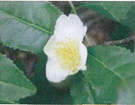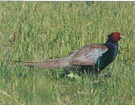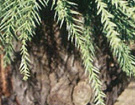和束町は、1954年に西和束村・中和束村・東和束村が合併して誕生し、1956年には湯船村を編入しました。京都府で面積が3番目に大きな町です。
町の中央を和束川がながれ、その川を挟むように美しい茶園の緑に覆われた山が迫っています。人の手によって作り出された美しい茶畑の景色は、2008年に京都府景観資産第1号に登録されました。その整然とした風景は、見ている人の気持ちを落ち着かせ、力を与えてくれます。
恵まれた土壊条件、そして、昼夜の大きな寒暖の差が生み出す霧によって美味しいお茶が育つため、和束の地は昔から香り高い高級煎茶の産地として知られています。現在も、高級茶として名高い宇治茶の45%近くを生産する最大産地です。 また、抹茶の原料となるてん茶の生産量では全国1位を誇っています。
Nishi Wazuka, Naka Wazuka, and Higashi Wazuka villages were merged into Wazuka town in 1954, and Yubune village was incorporated in 1956.Wazuka town is the third biggest town in Kyoto.
The Wazuka river flows through the center of the town, which is surrounded by the mountains covered with green beautiful tea plantations. This skillfully arranged beautiful scenery of the plantations, which makes us feel calm and confident, was registered as the first Kyoto Prefecture's Landscape Assets in 2008.
The Wazuka area has been long known for the production of high quality green tea. Fog, good soil conditions and big difference of temperature between night and day, all are indispensable for growing delicious green tea.Now,this place is the largest production center of Uji-cha, producing nearly 45% of the famous Uji tea.In addition,this area produces the largest amount of Ten-cha, which is the material of powdered green tea(Matcha).
和束町の歴史の始まりThe beginning of the history of Wazuka town
町内11か所の古墳とその出土品や随所に残る古い時代をしのばせる地名などから、 弥生時代には、この地に集落が形成されていたと言われています。 奈良時代になって、 恭仁京と紫香楽宮を結ぶ街道がこの地を通ることとなり、文献に「和束」という地名が現れるようになりました。
It is said that, taking into consideration 11 ancient burial mounds found in the town, excavated articles from them and many place names suggesting the old times, there should be a settlement in this area in the Yayoi period. It was in the Nara era that the road which linked between Shigaraki-no-miya and Kuni-kyo via this place was constructed and the place name of “Wazuka” first appeared in the documents.
鷲峰山金胎寺Kontai-ji temple

鷲峰山(684.5m)は、その山腹に奇岩、巨石が数多く重なり、大和の大峰山と並ぶ二大霊峰の一つとして多くの参拝者を集めています。金胎寺は聖武天皇(701年~756年)の勅願寺となるなど、皇室と深い関係があります。676年に開基した歴史あるお寺で、 境内には多宝塔や木造の弥勒菩薩坐像などの文化財が多数あります。
Mt.Juhou(684.5m)has many strangely shaped rocks and huge stones piling up on the hillside. This is one of the two sacred mountains along with Mt.Ohmine-san in Yamato and gathers many worshipers. Kontai-ji temple was founded in 676.It is strongly related to the Imperial family. This temple was designated by an Imperial order of the Emperor Shomu (701-756).There are many cultural assets in the precincts such as a two-storied pagoda and a wooden sedentary Maitreya-bodhisattva statue.
瑞泉山正法寺Shouhou-ji temple

高僧行基(668年~749年)が天平年間(729年~749年)に建立した由緒あるお寺です。後水尾天皇(1596年~1680年)の中宮東福門院(徳川和子、1607年~1678年)が帰依され、皇室の祈願寺となっています。
This temple is the venerable temple which virtuous priest Gyoki(668-749)built in the Tempyo era(729-749),Tofuku-mon-in (Tokugawa Kazuko, 1607 - 1678), the Empress of the Emperor Gomizuno-o(1596 -1680),worshiped at the temple, and, since then, it became the Imperial prayer temple.
百丈山大智寺Daichi-ji temple
1363年、 後光厳天皇(1334年~398年)の勅願寺として建立されました。1596年の震災により荒廃しましたが、1655年に再建されました。
This temple was built as an Imperial prayer temple by an Imperial order of the Emperor Gokogen(1334-1398)in 1363.It was ruined by an earthquake in 1596,and rebuilt in1655.
和束天満宮Wazuka Tenman-gu-shrine
983年に、菅原道真公を祀る天満宮として創建されました。 1336年に南北朝の争乱で社殿を焼失しましたが、1348年に再建されました。(本殿は重要文化財)
This shrine was founded as a Tenman-gu shrine in 983, dedicated to Michizane Sugawara. The main shrine was destroyed by fire during the fight of the northern and southern dynasties in 1336, and was rebuilt in 1348.(The main shrine is designated as a National Important Cultura1 Properties,)
八坂神社の大杉The big cedar of Yasaka shrine

和束町のほぼ中央部の小高い丘の上にあり、空を突くその姿は遠くからも目に入ります。幹周り12.8m、高さ31mで、樹齢1300年以上と言われ、京都府内では第1位の大きさを誇ります。(京都府指定天然記念物)
This big tree stands on a small hill in the central part of Wazuka town and can be seen from a distance. It is said to be more than 1,300 years old. The trunk circumference is 12.8m, and the height reaches up to 31m.It is the biggest cedar in Kyoto Prefecture. (Kyoto Prefecture Natural Monument)
和束町のその後の歴史The later history of Wazuka town
寺社の荘園領から皇室領へ
和束の地は、 平安時代から鎌倉時代には、奈良の興福寺と京都の北野天満宮の荘園となり、和豆香杣山之荘、 和束荘などと呼ばれました。
江戸時代になって、 徳川二代将軍秀忠(1579年~1632年)の娘である徳川和子(後の束福門院、1607年~1678年)が後水尾天皇(1596年~1680年)の中宮になった時、この地を朝廷に献上され、皇室直轄の領地となりました。
From the demesne of the Buddhist temple and Shinto shrine to that of the Imperial Family.
Wazuka area was the demesne of Kofuku-ji temple of Nara and Kitano-Tenman-gu shrine of Kyoto in the Heian and Kamakura eras. It used to be called as Wazuka –somanosho or Wazuka-sho.
In the Edo era, when Tokugawa Kazuko(1607-1678,1ater called Tofuku-mon-in)who was a daughter of the second Shogun Tokugawa Hidetada(1579-1632)became the Empress of the Emperor Gomizunoo(1596-1680),this area was dedicated to the Imperial court, and became the territory that the Imperial Family controlled directly.
お茶の産地として有名になる
和束におけるお茶の栽培は、鎌倉時代に、和束のすぐ西にある海住山寺の高僧「慈心上人(1170 年~1243年)」が、茶業興隆の祖と言われる京都栂尾の「明恵上人(1173年~1232年)」から茶の種子を分けてもらい、和束の驚峰山山麓に栽培したのが始まりである、と言われています。
その後、茶の栽培が和束で広がっていきましたが、それは、豊かな森林に囲まれた盆地の中心を和束川が流れ、 昼夜間の温度差が大きいため霧が立ちやすいためである、と考えられます。この霧が茶葉をやさしく包んで光をさえぎり、香り高い、美味しいお茶を育んでくれるのです。
江戸時代に皇室領となり、 和束のお茶は京都御所に納められるようなりました。そして、江戸時代中期からの茶保護施策により、和束の茶業も一層発展し、今日に至っています。
Became famous as a production area of tea
It is said that tea cultivation in Wazuka began when the high priest Jishin shonin(1170-1243)of Kaijusen-ji temple, which is just to the west of Wazuka, received some seeds of tea from the high priest Myoe shonin (1173 - 1232) of Togano-o, Kyoto, and started cultivating tea at the foot of Mt.Jubou in Wazuka. Myoe shonin is called the father of tea business.
After that, tea cultivation spread in Wazuka. It is because Wazuka river f1ows through the center of the basin which is surrounded by mountains with a1ot of woods and the temperature difference between day and night is big, and, as a result, the area gets foggy easily. The fog wraps tea leaves tenderly, keeps out some of the sunlight and raises good smelling and tasty tea.
It became the Imperial Family territory in the Edo era, and Wazuka’s tea came to be presented to Kyoto Imperia1 Palace. And then, the policy of tea conservation in the middle of the Edo era led tea business in Wazuka to develop further.

 和束町 町章
和束町 町章
Town symbol 和束町の花:茶の花
和束町の花:茶の花
Town flower : tea flower(Cha no hana) 和束町の鳥:きじ
和束町の鳥:きじ
Town bird: pheasant(kiji) 和束町の木:スギ
和束町の木:スギ
Town tree : cedar(Sugi)

